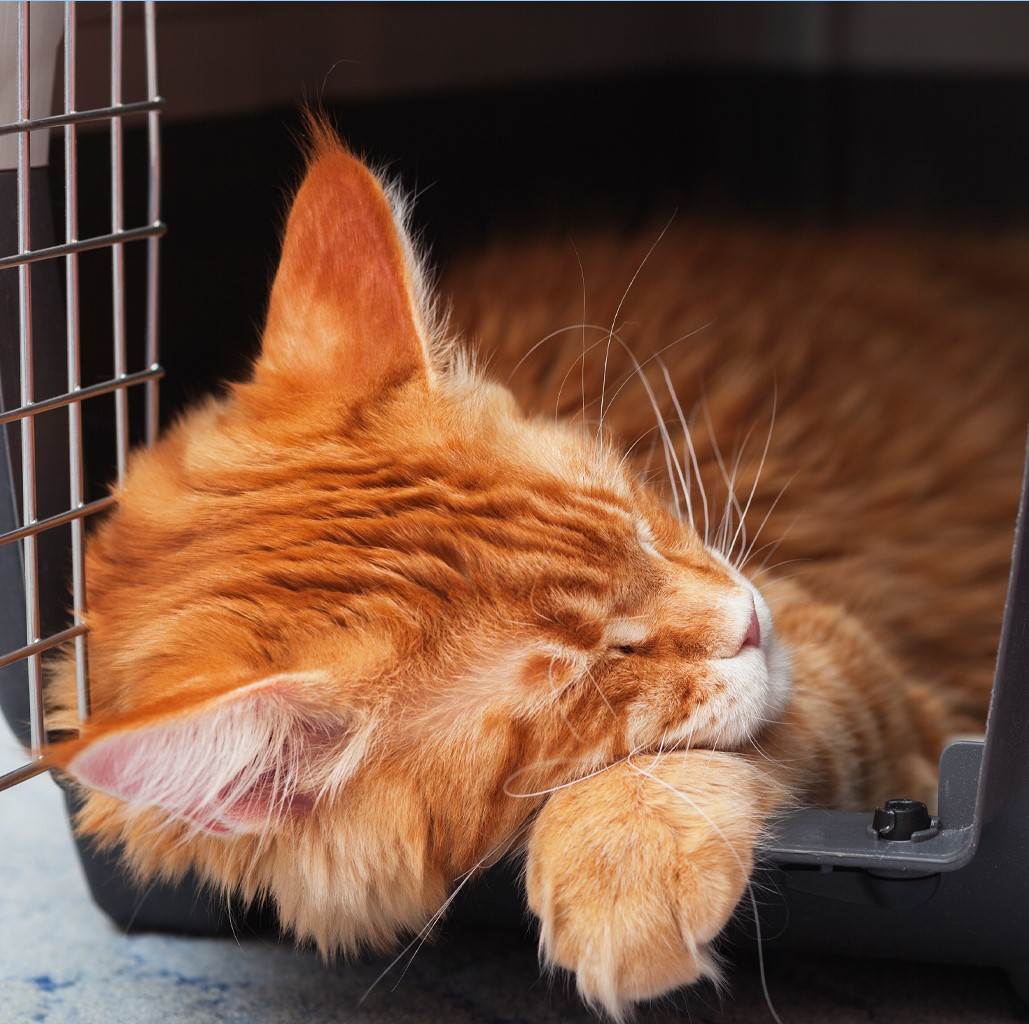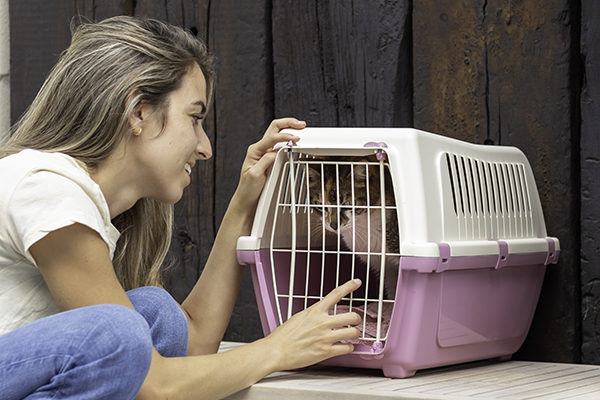5 steps for making travel and vet visits easier for you and your cat
Call your vet in advance and ask when the quietest times at the clinic are. Schedule your cat’s visit during these quiet times.
1. CHOOSE THE RIGHT CARRIER
If possible, use one that can be easily disassembled. That way, the carrier top can be removed to allow the cat to stay in the bottom part during the physical examination at the clinic.
Whatever carrier you use, make sure that it is big enough to allow your cat to stand up and turn in a full circle, and that it has large enough entryways both on the top and the side of the carrier to allow you to get your cat in or out without a struggle.
2. ENCOURAGE YOUR CAT TO TOLERATE — OR EVEN ENJOY — THE CARRIER
If you can, leave the carrier out in your living space. Let your cat explore it. Be patient — never push the cat inside. Instead, let your cat choose to enter.
You can make the space attractive to your cat by placing favourite toys, treats, or catnip inside the carrier. Placing a shirt you’ve worn inside the carrier is also a good idea — the familiar scent will calm your cat.
3. MOVE GENTLY WITH THE CARRIER
Hold the carrier level, and don’t swing while you walk.
Raise and lower the carrier slowly — no bumping!!
4. MAKE THE RIDE PLEASANT
Take your cat for short rides. This gives your cat the opportunity to acclimatise to the carrier and the car. Cats have sensitive hearing. Turn off the loud rock and play soft classical instead. Or even better, play music that has been made for cats! Scientists have developed music that features pitches and rhythms that cats enjoy.
You may be tempted to place the carrier on the passenger seat next to you, but that isn’t the best option. Place the carrier on the floor in the back — there’s less motion, which will make your cat feel more secure. Consider covering the carrier with a towel.
On the drive over, if your cat begins to yowl, avoid shushing. Shushing sounds too much like hissing and can agitate your cat further.
If you are taking a taxi, or public transport.
Most taxis will allow you to bring your pet. When you book your ride, be sure to include the information that you’ll have your pet with you, and always use a carrier on the ride.
5. WHEN YOU ARRIVE
If your vet doesn’t have separate waiting rooms — or if your cat is easily upset by other cats — consider these options.
If you and your cat can stay comfortable in a car outside, then stay in the car. Call the front desk to check in and wait until an exam room is ready before going in.
If waiting in the car isn’t an option, head in to the clinic. Seat yourself as far away as possible from the other owners and pets. Place the carrier on a chair — cats feel safer when they have a vantage point. Turn the carrier toward the wall to prevent eye contact between your cat and other animals.


